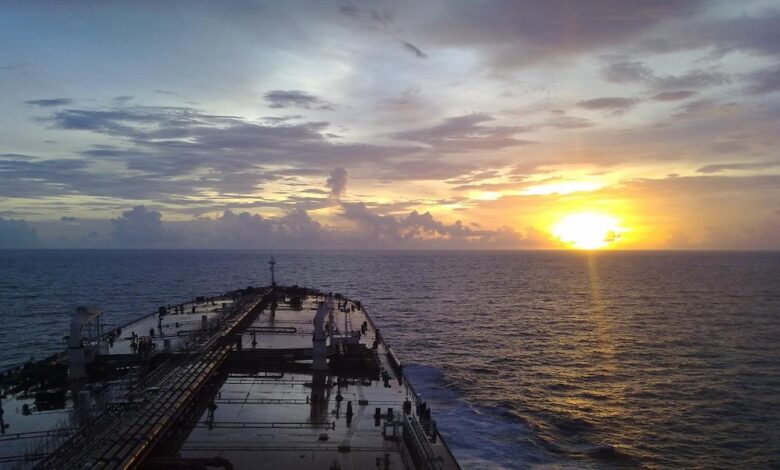[[{“value”:”

The vintage state of the global tanker fleet is leading to severe inefficiencies, with new data showing how many rust buckets have to spend more time not moving or in ballast.
Data from broker Gibson shows 51% of the total tanker fleet of 25,000 dwt and above is aged 15 years and older and 22% above the age of 20. When it comes to the dark fleet, 93% is aged 15 and over, and 64% is aged 20 years and older.
Vessels aged over 20 years old spend on average 17% more time in absolute terms anchored or moored across size classes compared to those under 20 years old, Gibson analysis of AIS data shows. The strongest difference was seen in VLCCs, with a 32% increase in days spent moored or anchored.
In terms of their laden status, vessels aged over 20 years old spend on average 14% more time ballasting in absolute numbers compared to vessels under 20. The strongest difference here was seen in MRs, which saw an increase of 22% in time spent ballasting.
“Predictably, tanker utilisation thus decreases with age,” Gibson pointed out in a new report issued on Friday. Vessel utilisation changes further if the ship in question is sanctioned. For example, sanctioned VLCCs over 20 years old are moored or anchored around 67% of the time, and 38% of the time laden with cargo, compared with 59% and 39% for unsanctioned vessels over the age of 20 respectively, indicating lower levels of trading.
Mette Frederiksen, head of research and insight at Tankers International, writing for Splash earlier this year about the ageing VLCC fleet, noted that for the ships beyond 18 years, efficiency rapidly deteriorates, with trading capacity dropping by approximately 10% annually as vessels face stricter limitations and a reduced number of charterers can fix them.
“The impact of this inefficiency and current landscape of the VLCC market is significant,” Frederiksen wrote.
While the total VLCC fleet has increased by over 100 ships in the last five years, the true operational growth in terms of usable capacity is closer to just 60 vessels, according to Tankers International data. Looking ahead, an anticipated 70 new VLCCs will enter the market within the next three years, translating to an 8% nominal capacity increase. However, due to the declining utilisation of older ships, the effective supply growth is projected by Tankers International to be only 1%.

The post Inefficiencies proliferate across ageing global tanker fleet appeared first on Energy News Beat.
“}]]
Energy News Beat
